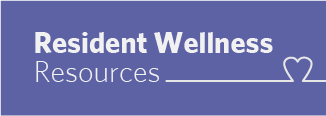Method and Written Report Guidelines
Teaching methods:
Trial and evaluation of a teaching method.
Teaching is an essential component of residency and is one of the CanMeds Scholar competencies. Teaching may comprise of delivering lectures, facilitating small group learning sessions with peers and other learners, or clinical bedside teaching. Scholarly teaching includes incorporating the best available evidence, “best practices”, and the most up to date literature into teaching. It also involves using appropriate evaluation tools and feedback to guide improvements.
The Scholarship of teaching involves conducting research into novel teaching methods and practices to determine what is most effective.12
Heskuth, et al. published a framework for developing excellence as a clinical educator. They look at competence in teaching as 12 learning outcomes. The first 7 outcomes relate to the tasks the doctor as teacher should be able to do:
- Outcome 1: competence in teaching large and small groups
- Outcome 2: competence in teaching in a clinical setting
- Outcome 3: competence in facilitating and managing learning
- Outcome 4: competence in planning learning
- Outcome 5: competence in developing and working with learning resources
- Outcome 6: competence in assessing trainees
- Outcome 7: competence in evaluating courses and undertaking research in education
Heskuth, et al. then describe three outcomes focusing on how the doctor as a teacher approaches his or her teaching:
- Outcome 8: with an understanding of the principles of education (the intellectual intelligences)
- Outcome 9: with appropriate attitudes, ethical understanding and legal awareness (emotional intelligences)
- Outcome 10: with appropriate decision-making skills and best evidence-based education (analytical and creative intelligences)
The final two outcomes relate to the professionalism and personal development as a teacher:
- Outcome 11: the role of the teacher within the Health Service and community
- Outcome 12: personal development with regard to teaching
A Scholar project in teaching should encompass the above 12 outcomes. A rubric for evaluating scholarly teaching could be as follows:
- Outcome 1: Describe the sessions you led in teaching large and small groups. Reflect on how you prepared for each respective session. Describe some evidence-based techniques you employed. Seek out feedback and reflect on how you would incorporate this feedback into the next time you teach a large or small group.
- Outcome 2: Describe the encounters you had where you taught a junior resident or a medical student at the bedside. Reflect on how the encounter went. Describe some evidence-based techniques you employed. Seek out feedback and reflect on how you would incorporate this feedback into the next time you teach at the bedside.
- Outcome 3: Describe the encounters you had where you gave feedback to a junior resident or a medical student, helped them achieve specific learning outcomes, helped them self-assess their own skills, drew up learning contracts or counseled learners on things that might be hindering their progress. Reflect on how the encounter went. Describe some evidence-based techniques you employed. What did you do well and what do you think you can improve upon?
- Outcome 4: In your two years of residency, seek out opportunities to plan an educational session with your peers or with medical students. Reflect on the session. Describe some evidence-based techniques you employed. Develop an evaluation form on the session for the participants to fill out and present this as part of your “data”. Reflect on how you would plan sessions differently in the future, based on this feedback.
- Outcome 5: In any of the sessions of lecture you planned or delivered, come up with some handouts, notes, and or other learning resources for your peers. Present this as part of your “data”.
- Outcome 6: Seek out an opportunity to help evaluate a junior resident or medical student. Opportunities to do both formative and summative assessments should be sought. Ask your attending to assess how you did with this and reflect on what you think you did well, and what you thought you could improve upon.
- Outcome 7: Help design an evaluation of a session that you ran, or a course that you helped teach. Present this as “data”. (See Outcome 4)
- Outcomes 8, 10: Perform a cursory review of the literature and write-up what you would consider to be sound educational principles. Cite your evidence. Describe different learning techniques in different venues of teaching (small group, large group, didactic teaching, bedside teaching, etc.).
- Outcome 9: Reflect on a situation where you felt challenged, or you felt you were dealing with a difficult learner. How did that make you feel as a teacher? As a learner?
- Outcome 11-12: Reflect on your general teaching experience in residency. What expected and unexpected challenges did you face? Participate in a continuing professional development course on teaching, or critically appraise an article on teaching. What did you learn from this course or article? Were there any biases?
Educational Tool:
An educational tool can be a tool to educate the public, patients, or doctors. It can be in the form of an update article, handout, video or other media with the main objective to educate. The tool must be accompanied by a report that demonstrates a thorough review of the latest and relevant literature and an appraisal of the quality of evidence. It must also give learners a way to assess their competence.
Some educational tool examples:
- CME Update Article
- Educational Patient Video
- Educational Patient Handout

